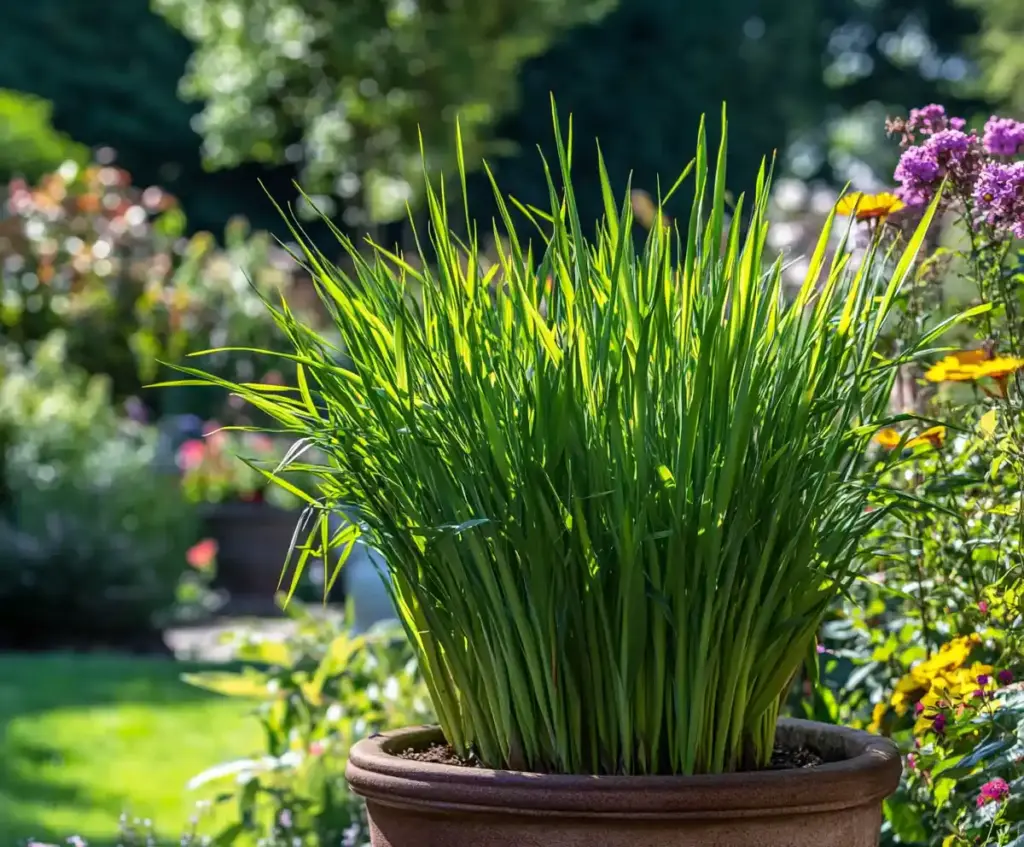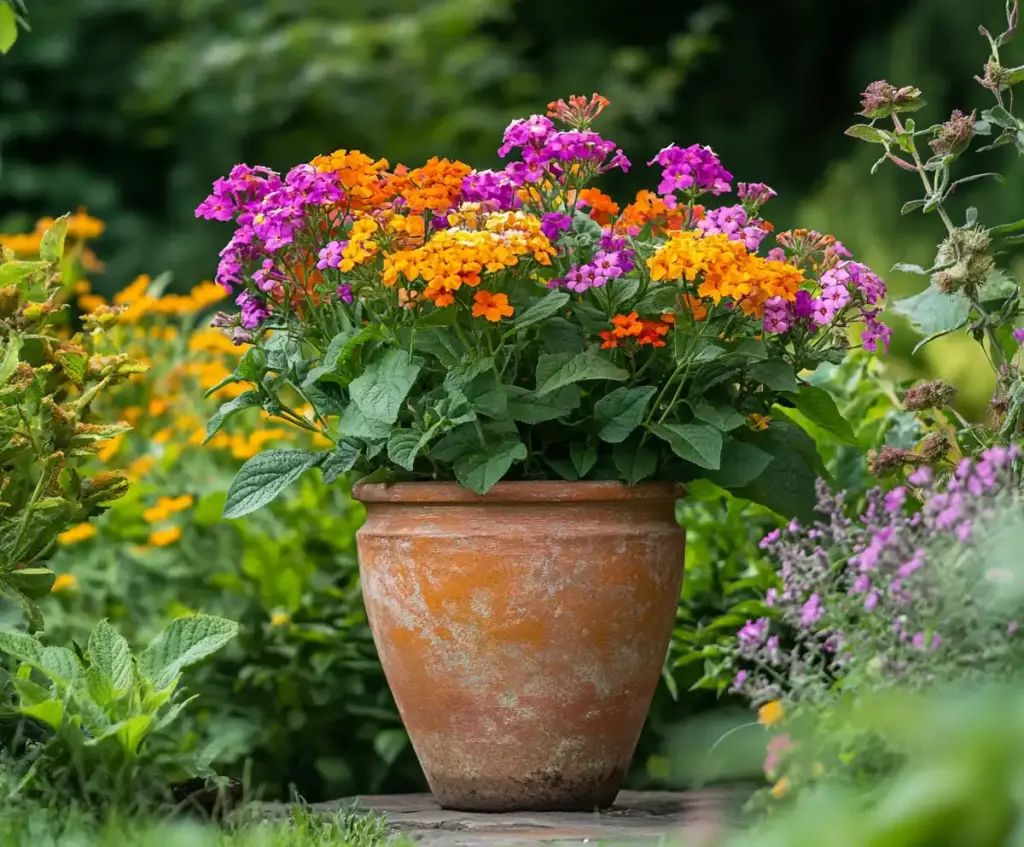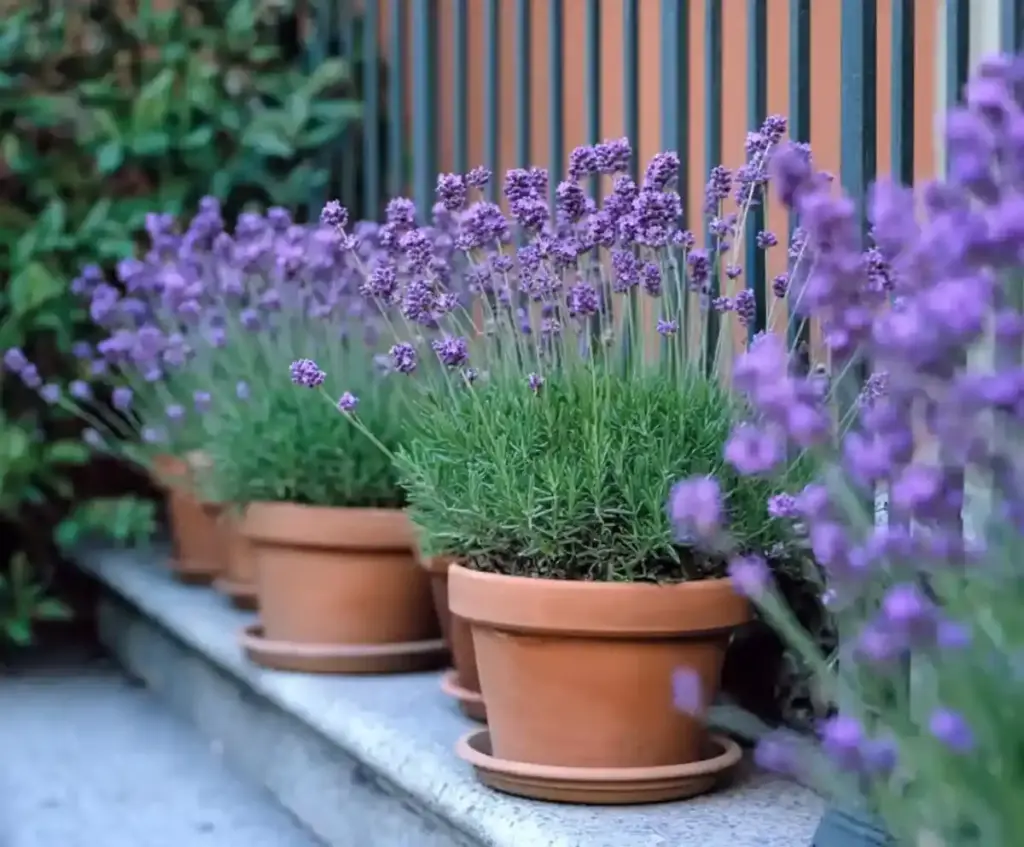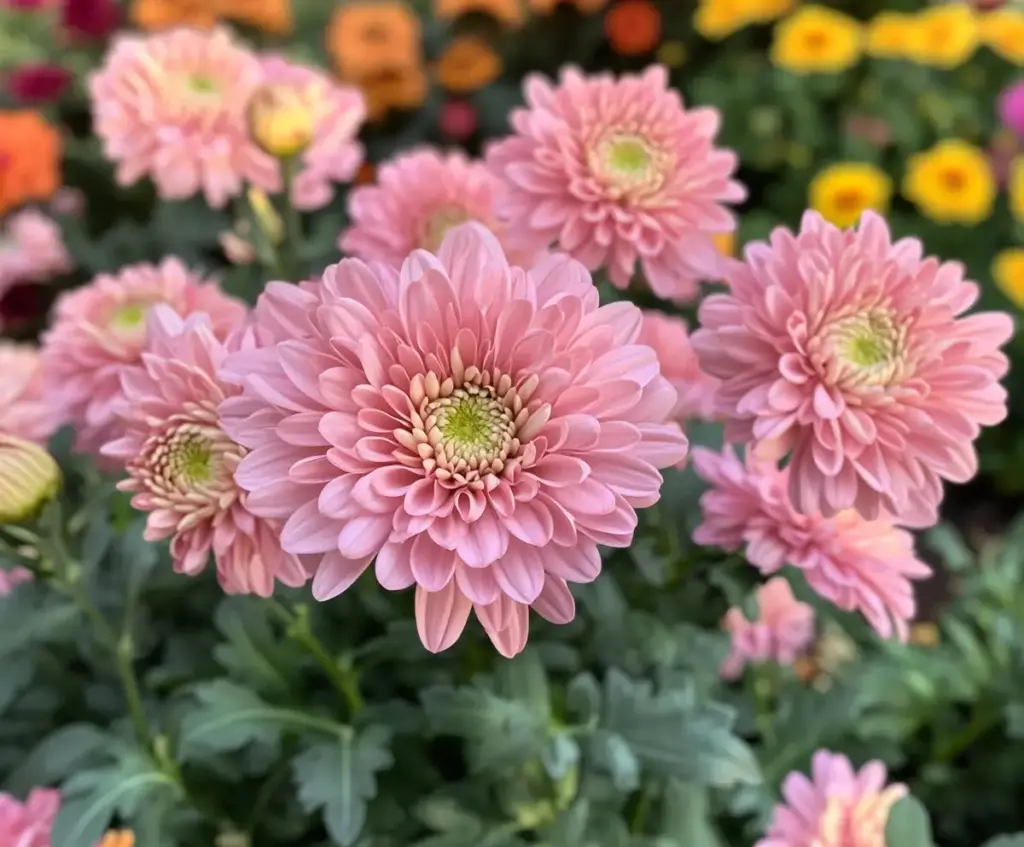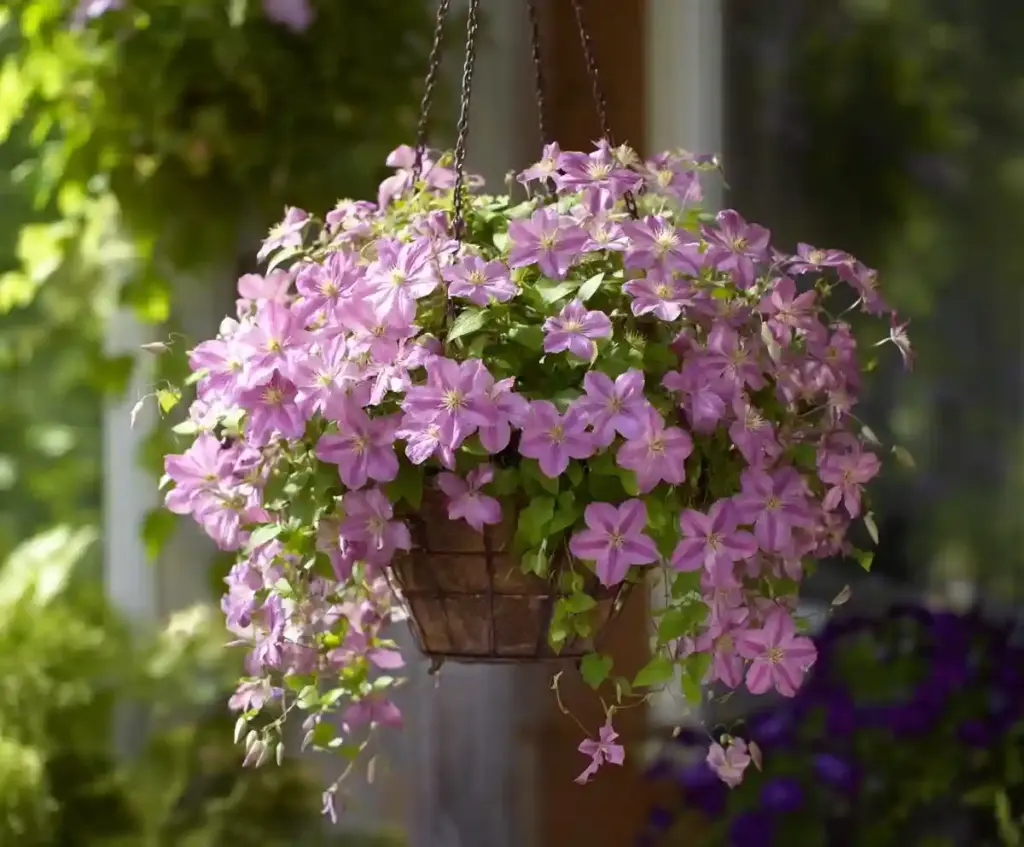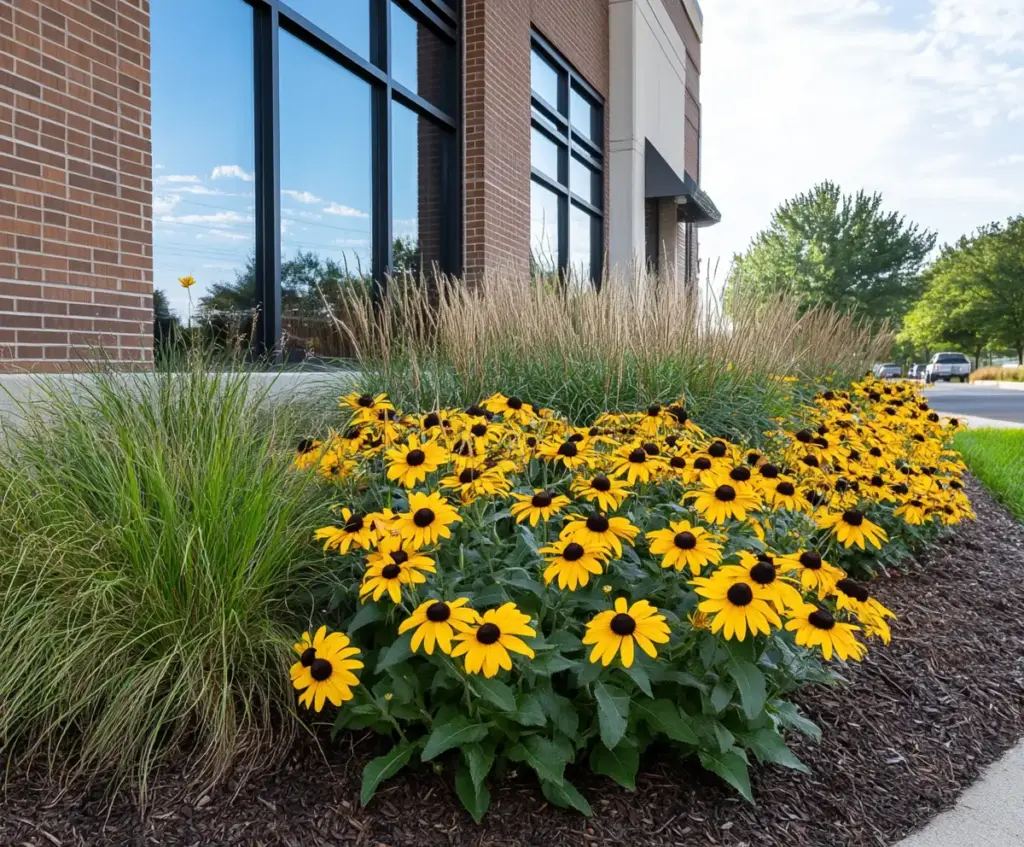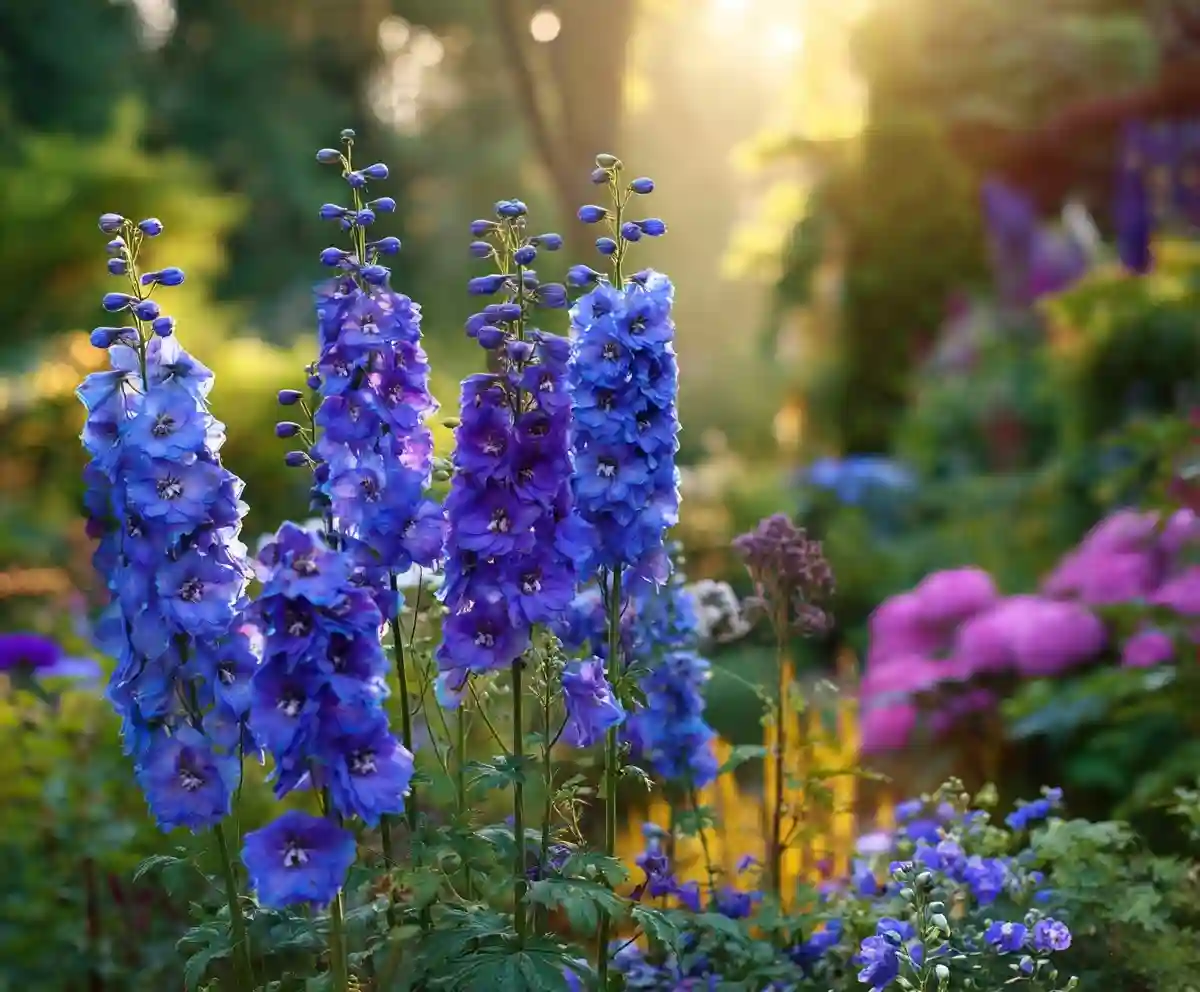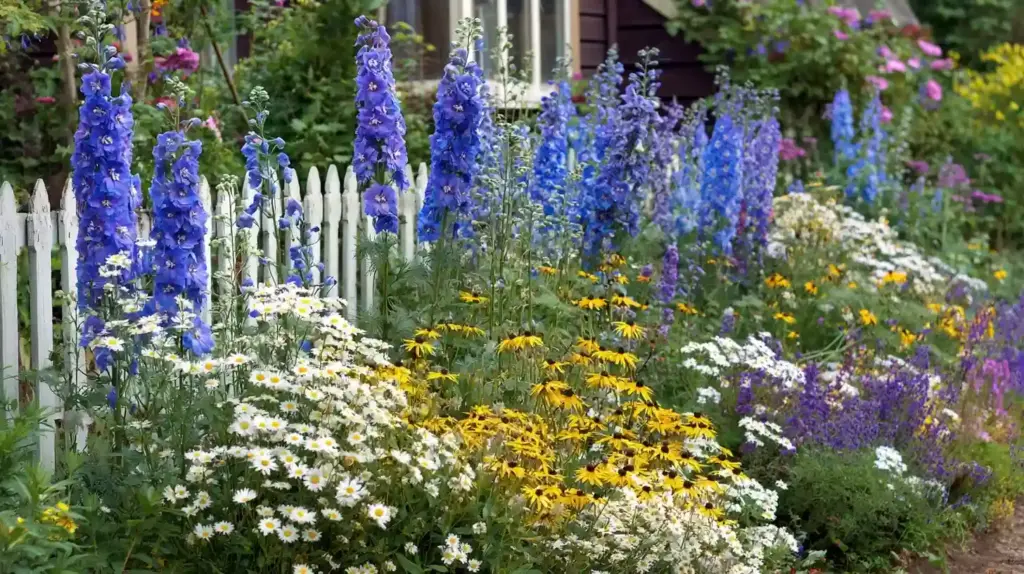Grow delphiniums for a stunning splash of vertical color in your garden, whether you’re cultivating a classic cottage look or creating a bold focal point. These stately perennials are known for their towering spikes of vibrant blooms in rich shades of blue, pink, purple, and white. Though they’re a bit fussy about where and how they’re planted, the payoff is undeniable—lush, dramatic flowers that return year after year when cared for correctly.
If you’re just getting started or have struggled with these beauties before, don’t worry. With a few practical tips and the right conditions, anyone can grow delphiniums successfully—even beginners.
Table of Contents
🌞 Where to Grow Delphiniums
Choosing the right location is the first step to successfully grow delphiniums. These tall, elegant flowers thrive in spots that offer full sun—ideally six hours or more each day. A sheltered area protected from strong wind is essential, especially since their tall stems can easily snap in gusty conditions.
Delphiniums do best in rich, well-drained soil that retains moisture without staying soggy. Avoid low-lying spots where water collects. If your garden has heavy clay soil, mix in compost or grit to improve drainage.
Ideal growing conditions:
- Sunlight: Full sun (6+ hours daily)
- Soil: Moist but free-draining, rich in organic matter
- Protection: Lightly sheltered from wind (near a fence or wall is ideal)
- Placement: Back of borders for visual height and support
By planting in the right environment, you’ll set the stage for stronger stems, bigger blooms, and fewer disease issues.
🌿 How to Plant Delphiniums
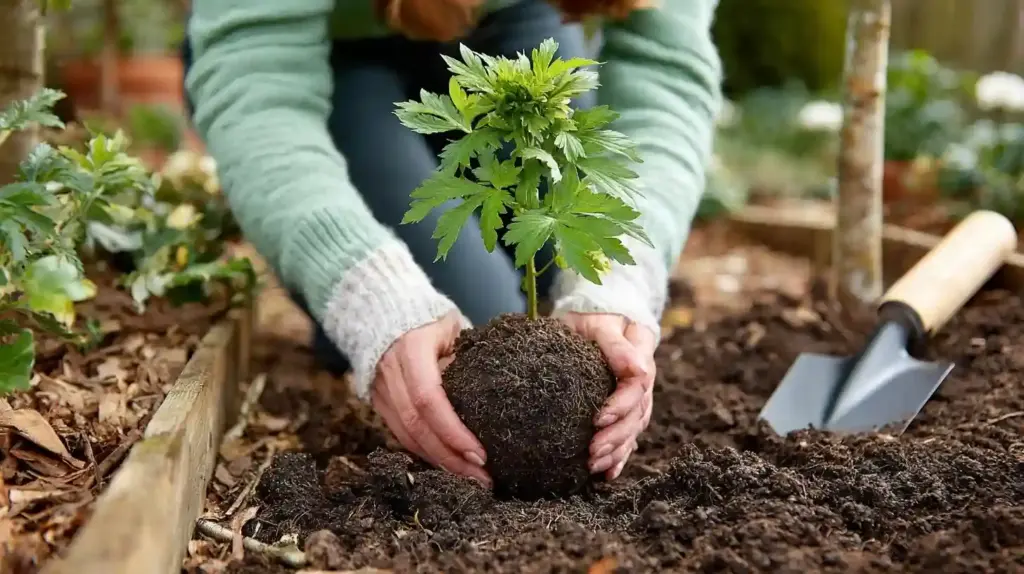
Knowing how to grow delphiniums begins with planting them at the right time and depth. Spring and early autumn are ideal, giving roots time to settle before summer heat or winter cold hits. These perennials are sensitive to poor drainage and overcrowding, so spacing and soil prep are essential.
Step-by-step planting guide:
- Choose a sunny, sheltered site
Look for a location that gets full sun and avoids harsh winds. - Improve your soil
Work compost or aged manure into the top 12 inches. If the soil is dense or clay-heavy, add grit or horticultural sand to improve drainage. - Dig the hole
Make it twice the width of the root ball, and just deep enough so the plant sits at the same level it did in the pot. - Space correctly
Leave 2 to 2.5 feet (60–75 cm) between plants to allow airflow and reduce fungal risk. - Water thoroughly after planting
This helps settle soil around the roots. - Mulch well
Use organic mulch to hold moisture and suppress weeds.
With the right start, your delphiniums will establish strong roots and return year after year with bold, upright blooms.
🌸 Caring for Delphiniums
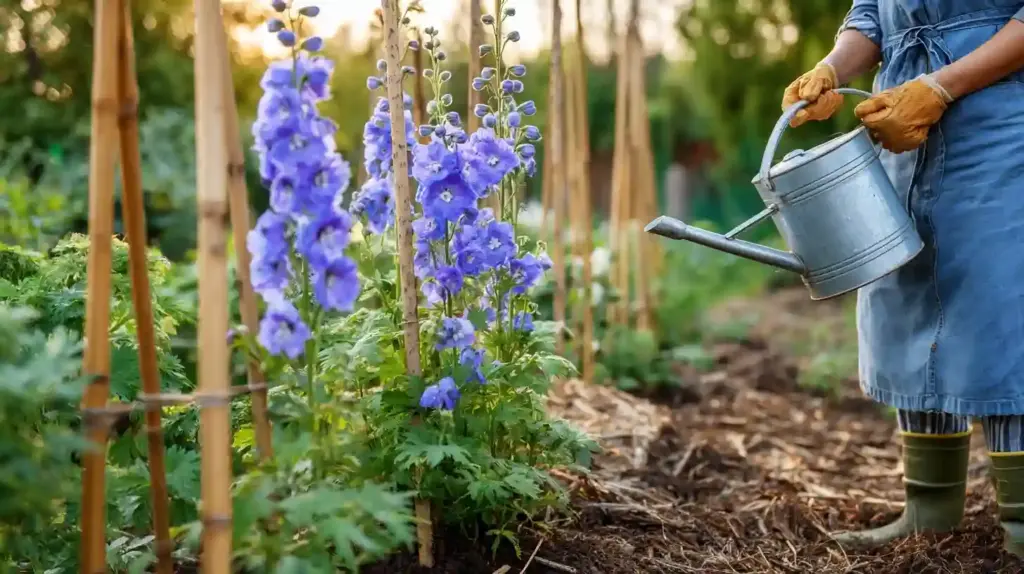
Once established, knowing how to grow delphiniums means staying on top of their feeding, watering, and structural needs. These are high-maintenance plants—but when cared for properly, they’ll reward you with spectacular spires of color that can bloom more than once a season.
🌿 Feeding for big blooms
Delphiniums are heavy feeders. Start in early spring when new shoots emerge and continue through their flowering period.
- Use a high-potash liquid feed (like tomato fertilizer) every 2 weeks
- Top-dress in early spring with compost or slow-release fertilizer
💧 Watering tips
Keep the soil evenly moist, especially during dry spells. Don’t allow the ground to stay soggy, as it can rot the roots.
- Water deeply once or twice a week during hot months
- Mulch around the base annually to lock in moisture
🪴 Staking for support
Because delphiniums can grow over 6 feet tall, they need help standing upright.
- Insert bamboo canes or grow-through supports in early spring
- Tie stems loosely with soft twine as they grow
✂️ Deadheading and second blooms
After the first flush in early summer:
- Cut flower spikes down to the base
- Keep side shoots intact
- Water and feed again to encourage a second bloom in late summer
🍂 Autumn and winter care
- Cut plants back to the ground after foliage dies back
- Mulch with compost to protect roots over winter
Well-timed care keeps your delphiniums blooming strong and coming back year after year.
🌱 How to Propagate Delphiniums
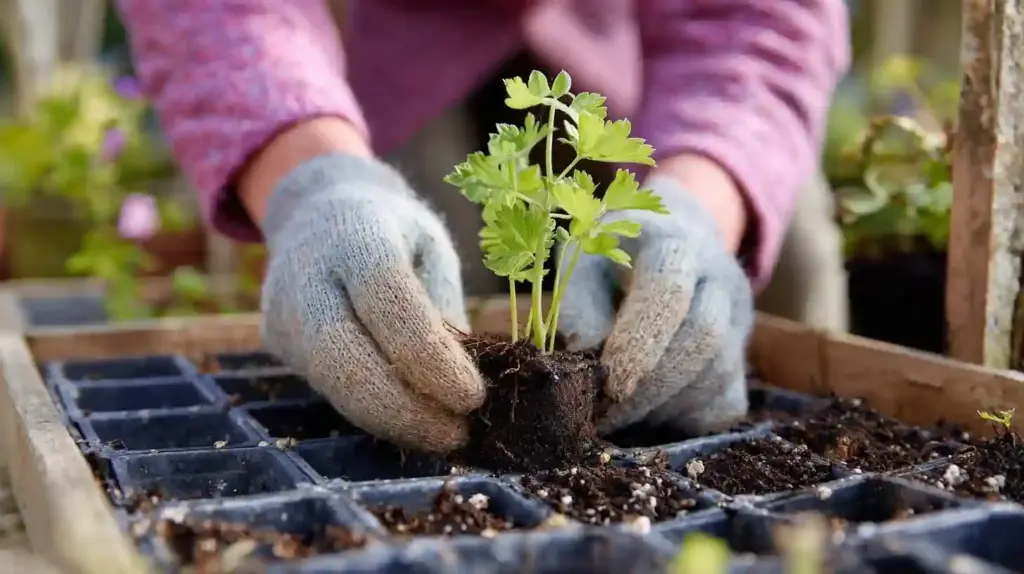
A big part of mastering how to grow delphiniums is learning how to multiply your favorites without spending more at the garden center. You can propagate them from seed or take basal cuttings—both are effective, but basal cuttings offer a faster, more reliable result with identical traits to the parent plant.
🌾 Growing delphiniums from seed
- Best time to sow: Late winter to early summer (Feb–June) or early autumn (Sept–Oct)
- Use trays filled with moist seed compost
- Place in a bright area with temperatures between 50–60°F (10–15°C)
- Fresh seeds have the highest germination rate
Sowing from seed is budget-friendly, but the plants may not match their parent exactly in color or height.
✂️ Taking basal cuttings (recommended)
This is the best way to produce strong, healthy clones.
Here’s how:
- Wait until early spring when new shoots appear at the base
- Use a sterile knife to cut a shoot just below soil level
- Remove lower leaves and keep just a few at the top
- Place in a small pot filled with compost and perlite
- Cover with a plastic bag or propagator lid to retain humidity
- Keep in a warm, bright spot out of direct sunlight
- Roots usually form in a few weeks
Basal cuttings are easy to manage and often produce stronger, earlier blooms than seed-grown plants.
🐌 Common Problems and How to Solve Them
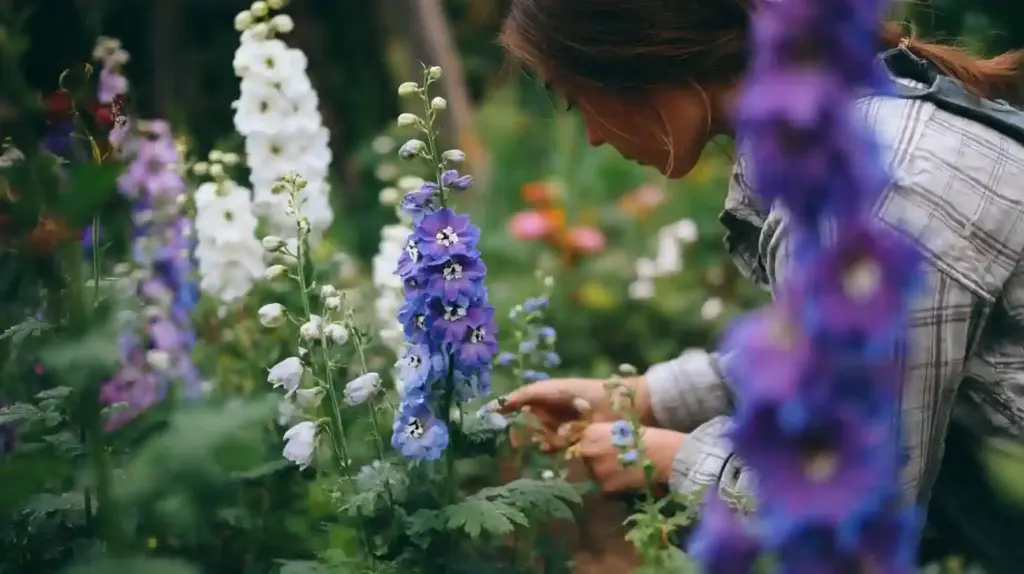
Even seasoned gardeners run into issues when they grow delphiniums. These majestic plants are prone to pests and diseases, especially during wet or humid conditions. But with a watchful eye and a proactive approach, most problems are manageable.
🐌 Slugs and snails
Problem: They love tender delphinium shoots in early spring.
Solutions:
- Scatter crushed eggshells or organic slug pellets
- Use beer traps or copper rings around the base
- Apply garlic spray (1 crushed bulb to 1 liter of water)
- Try nematodes if soil is moist
🌫️ Powdery mildew
Problem: White, dusty coating on leaves in dry or stressed conditions.
Solutions:
- Water deeply and regularly
- Space plants properly for airflow
- Use organic fungicides as needed
🍂 Rust
Problem: Orange-brown pustules on foliage.
Solutions:
- Remove infected leaves (do not compost)
- Rake and discard fallen foliage in autumn
- Use sulphur-based sprays preventively
🦠 Black blotch (bacterial)
Problem: Irregular dark spots on leaves; spreads quickly in wet conditions.
Solutions:
- Remove and destroy affected plants
- Disinfect tools
- Avoid replanting delphiniums in that spot for a year
Regular monitoring and spacing your plants properly can go a long way in preventing disease outbreaks.
🛒 Buying Advice: Choosing the Right Delphiniums
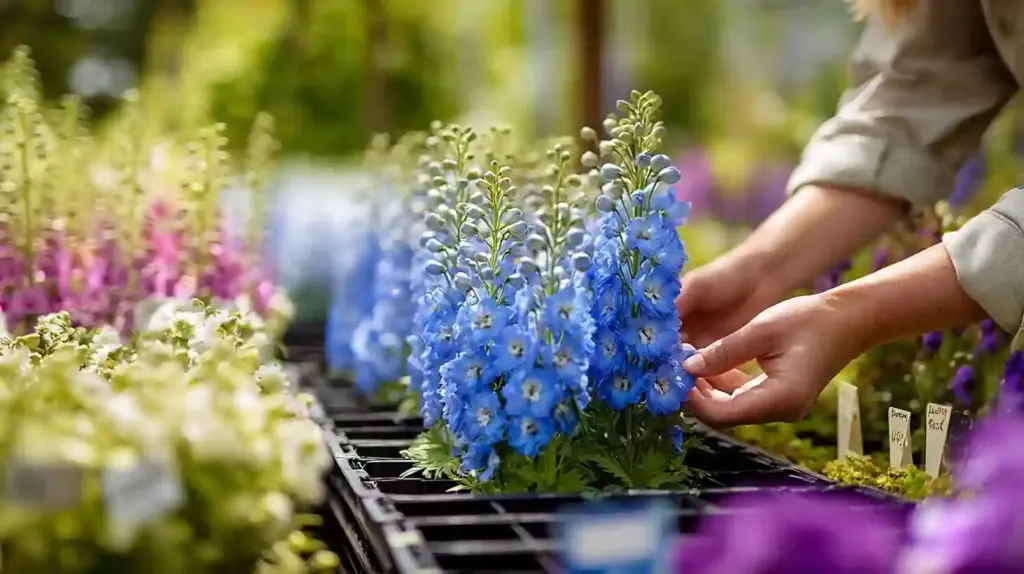
To successfully grow delphiniums, start with the right variety for your garden’s size and conditions. Whether you’re ordering online or browsing a nursery, making smart choices up front means healthier plants and fewer headaches later on.
📏 Know your garden space
Delphiniums come in a range of sizes:
- Compact types like Magic Fountain are ideal for small gardens or containers
- Tall varieties such as Elatum hybrids suit large borders and make bold background plants
🌞 Match plant to your conditions
These perennials need:
- Full sun (6+ hours daily)
- Fertile, well-draining soil
- Protection from wind and soggy spots
Avoid shady or waterlogged areas—plants there will struggle or fail.
🌱 What to look for when buying
Whether shopping online or in person:
- Look for bright green foliage, free of spots or yellowing
- Avoid leggy or wilted plants—they may be stressed
- Check that roots are firm and moist, not dry or mushy
💸 Best buying formats
- Plug plants (spring): Affordable and easy to grow on at home
- Potted plants: Great for instant impact in borders
- Specialist nurseries: Offer better selection and healthier stock
Choosing the right delphiniums ensures strong, reliable blooms from day one.
🌈 Top Delphinium Varieties to Grow
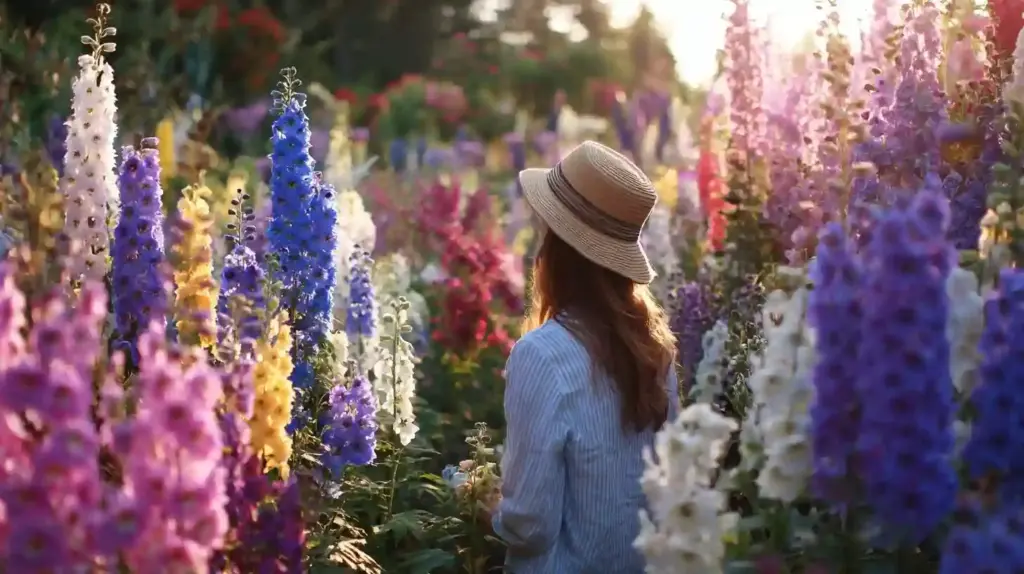
Whether you’re after compact charm or dramatic height, there’s a delphinium to fit every garden. The following cultivars are reliable, eye-catching, and ideal for both beginners and seasoned gardeners.
💙 Delphinium ‘Amadeus’
- Deep violet-blue double blooms with a striking dark center
- Grows to about 1.5m tall, great for mid-border planting
- Excellent for cutting and bold garden displays
🌸 Magic Fountain Series
- A compact, bushy option perfect for containers and small spaces
- Comes in blue, white, pink, and lavender tones
- Stays around 90cm tall, ideal for front borders
🌼 Pacific Hybrids
- Tall and vibrant, these are the classics from the 1950s
- Rich color range with towering spikes reaching up to 1.5m
- Slightly short-lived but perfect for cottage gardens
💫 Rising Stars Mixed
- A cheerful blend of blues, pinks, and purples
- Combines both single and double flowers
- Reaches ~1.5m, ideal for informal planting schemes
🩵 Delphinium elatum ‘Faust’
- Intense cobalt-blue blooms with a black “bee” center
- Can grow up to 2.5m, offering strong vertical drama
- Great for back borders and bold statements
🌷 Delphinium elatum ‘Cinderella’
- Soft pink triple-layered petals on sturdy stems
- Around 1.2m tall, romantic and pastel-friendly
- Award-winning variety with excellent garden performance
Selecting one or two of these varieties is a great way to grow delphiniums that suit both your style and space.
author:🌿 Conclusion
To grow delphiniums successfully, it’s all about location, timing, and consistent care. From preparing rich, well-drained soil to staking tall stems and managing pests, these elegant perennials need a bit of effort—but the reward is a garden bursting with vertical color and graceful blooms.
Whether you’re planting compact varieties in containers or cultivating towering types for border drama, delphiniums are worth the commitment. Start with healthy plants, feed and water them regularly, and don’t forget to enjoy their show-stopping blooms from early summer through fall.
With the right approach, even first-time gardeners can grow delphiniums with confidence.
❓ FAQ: Growing Delphiniums
How tall do delphiniums grow?
Most delphinium varieties grow between 3 to 6 feet tall, though some, like Delphinium elatum ‘Faust’, can reach over 8 feet in perfect conditions. Compact types like Magic Fountain stay under 3 feet, making them great for containers.
Can I grow delphiniums in pots or containers?
Yes, you can grow delphiniums in pots, especially compact varieties. Choose a deep container (at least 12–15 inches) and use rich, well-draining compost. Support is still important—use short stakes even in pots.
Do delphiniums come back every year?
Most delphiniums are short-lived perennials, meaning they come back for a few years with proper care. Regular feeding, deadheading, and dividing clumps every few seasons helps keep them vigorous.
Are delphiniums toxic to pets or humans?
Yes, all parts of the plant are toxic if ingested, especially to dogs, cats, and livestock. Keep delphiniums out of reach of pets and children.
When is the best time to plant delphiniums?
The best times to plant are early spring or early autumn. These seasons provide cool temperatures and natural moisture, helping roots establish without stress.
Why are my delphiniums flopping over?
Tall stems need staking, especially in windy areas. Without support, they’re prone to snapping or leaning. Install stakes early in spring and tie stems loosely with garden twine.
🌿 Love gardening inspiration? Follow me on Pinterest for bold plant ideas, tips, and seasonal color!
More Posts
